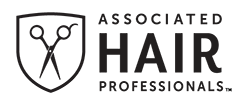It takes 10 minutes for many disinfectants to effectively kill pathogens. Given this fact, and the other protocols necessary, we believe it is important to allow 30 minutes before the next client. Follow the guidelines of your state board. This protocol may go above and beyond standard best practices.
Room Turnover Sanitation Protocols
- If your student salon has windows, open them immediately after a client has left and while you turn over your station to get as much air circulation in the room as possible. If you do not have windows, consider adding a high-efficiency particulate air (HEPA) purifier to the space.
- Clean and disinfect all non-porous implements used in the service including brushes, combs, clips, scissors, etc., and store in a closed container.
- Clean and disinfect all electrical implements used in the service including blow dryers, flat irons, curling irons, etc.
- Use hospital grade, EPA-approved disinfectants to clean anything the client came in contact with including your station, chair, rolling carts, table, doorknobs, implements, storage containers, etc. Follow more stringent state or regulatory agency protocols as required. Follow the product manufacturer’s directions for contact time (or how long a surface must stay visibly wet before the disinfectant destroys the pathogen). For some products, this can be 10 minutes.
- Per CDC recommendations, clean all equipment, devices, and surfaces between each client interaction, including product dispensers. This process includes cleaning:
- Hard (Non-Porous) Surfaces: If surfaces are dirty, they should be cleaned using a detergent or soap and water prior to disinfection. For disinfection, use EPA-approved disinfectants. Follow the manufacturer’s directions for all cleaning and disinfection products for concentration, application method, contact time, etc. Additionally, diluted household bleach solutions (at least 1000ppm sodium hypochlorite) can be used if appropriate for the surface. Follow manufacturer’s instructions for application, ensuring a contact time of at least 1 minute, and allowing proper ventilation during and after application. Check to ensure the product is not past its expiration date. Never mix household bleach with ammonia or any other cleanser. Unexpired household bleach will be effective against coronaviruses when properly diluted. Prepare a bleach solution by mixing 5 tablespoons (1/3 cup) bleach per gallon of water or 4 teaspoons bleach per quart of water.
- Soft (Porous) Surfaces: For soft (porous) surfaces such as carpeted floor, rugs, and drapes, remove visible contamination if present and clean with appropriate cleaners indicated for use on these surfaces. After cleaning, if the items can be laundered, launder items in accordance with the manufacturer’s instructions using the warmest appropriate water setting for the items and then dry items completely. Otherwise, use products that are EPA-approved for COVID-19.
- Implements: For non-porous cosmetology implements such as scissors, clippers, combs, brushes, etc., clean the item with hot, soapy water to remove any physical debris. Rinse and dry the implement completely. Follow by spray, wipe, or immersing the implement in an EPA-registered disinfectant for the full contact time as stated by the manufacturer’s directions. If disinfecting by immersion, items should be removed at end of contact time, rinsed, and dried with a clean paper towel.
- Electronics: For electrical implements such as a hair dryer, flat iron, or electric clippers/buzzers, clean the implement with a spray or wipe to remove any physical debris such as hair. Follow with an EPA-registered disinfectant spray or wipe for the full contact time as noted by the manufacturer’s directions. Use caution when using a spray, be sure your device is unplugged, and do not spray into the motor. For electronics such as tablets, touch screens, keyboards, remote controls, and ATM machines, remove visible contamination if present. Follow the manufacturer’s instructions for all cleaning and disinfection products. Consider use of wipeable covers for electronics. If no manufacturer guidance is available, consider the use of alcohol-based wipes or sprays containing at least 70% alcohol to disinfect touch screens. Dry surfaces thoroughly to avoid pooling of liquids.
- Towels, Client Draping, Clothing, and Other Items that Go in the Laundry: In order to minimize the possibility of dispersing virus through the air, do not shake dirty laundry. Remove all client draping and towels; fold items in on themselves before putting in a closed bin or hamper. Launder items in accordance with the manufacturer’s instructions using the warmest appropriate water setting for the items and then dry items until hot to the touch. All towels and client draping should be stored in a closed covered container.
- Repeat hand-washing protocol and reset station for next client.
Sanitation Between Clients
- Continue to wipe down bathroom surfaces (doorknobs, toilet handles, sink areas, light switches, etc.), reception-area countertops, point-of-sale equipment, and chairs (arm rests).
- Ensure all physical debris is removed from the station, including sweeping of hair.
Sanitation at End of Day
- Empty all trash cans (each trashcan has a liner), then use cleaning cloths to wipe the inside and outside of the garbage can thoroughly.
- Do end of day post-client cleaning, and include the phone, keyboard, thermometer, all light switches and doorknobs, as well as the bathroom and any other surfaces clients came in contact with.
- Remove bagged laundry from dirty bin for washing and replace hamper with new liner.
